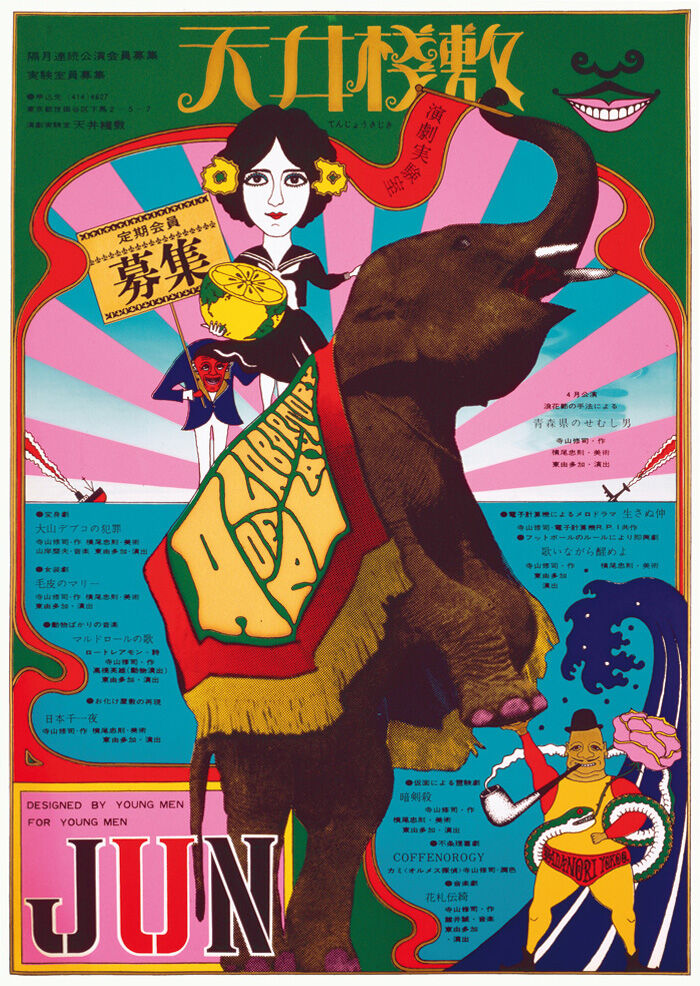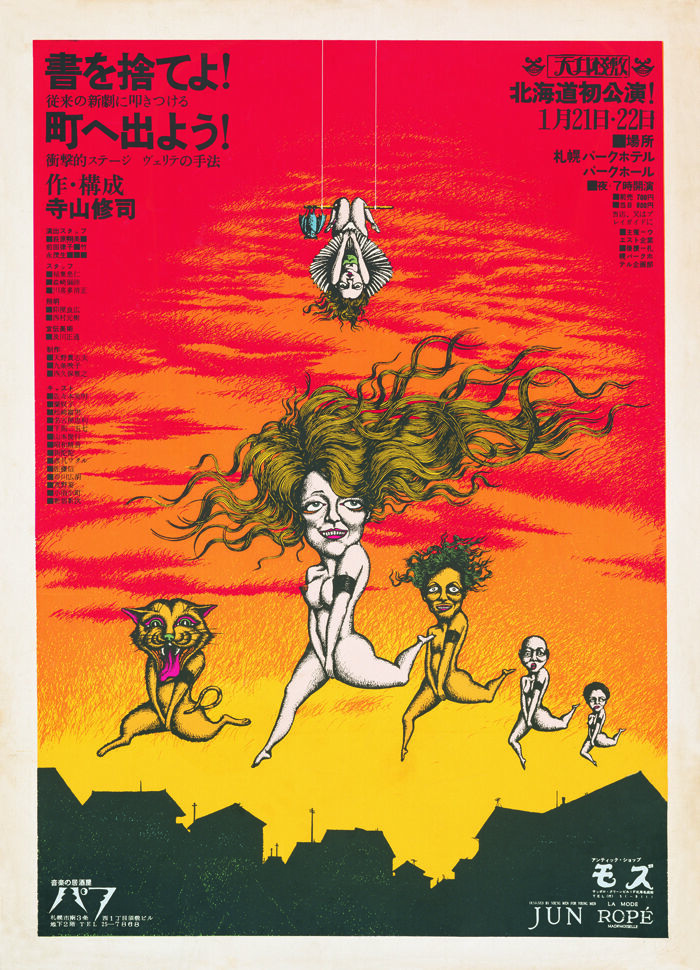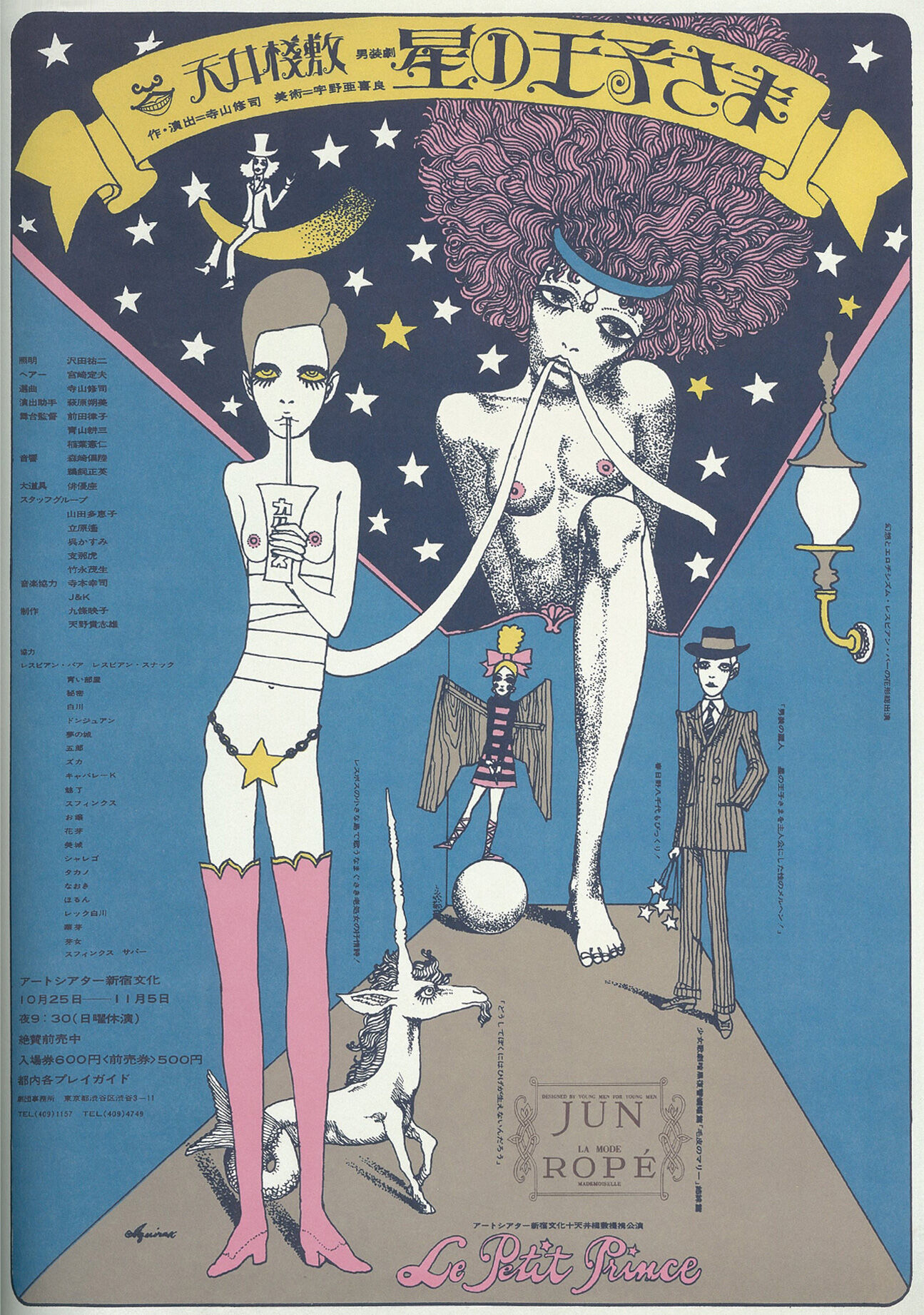TERAYAMA Shuji[1935-1983]
TERAYAMA Shuji was born in 1935 in Hirosaki City. After graduating from Aomori Prefectural Aomori High School, he enrolled in the Department of Japanese Language and Literature, part of the School of Education, at Waseda University in 1954. Despite developing nephrosis in 1955 and remaining hospitalized until 1958, he published his first poetry anthology, “A Book in the Sky” (Matoba Publishing), in that year and began to draw attention as a talented literary figure. Starting with haiku and tanka poems, he went on to become a multimedia artist freely traversing such diverse genres as radio, television, film, photography, and even horse-racing and sports commentary.
In 1967, Terayama founded the independent theater troupe Tenjo Sajiki (Ceiling Gallery) with others including the graphic artist YOKOO Tadanori, the playwright HIGASHI Yutaka, and the actress KUJO Eiko. The 1960s and ‘70s were the height of the angura (underground) theater movement in Japan. Even though the nation had modernized at a rapid pace thanks to booming economic growth, strain had emerged between social structures and the human psyche. As if to expose these contradictions of modern capitalist society, there was a flourishing of activity criticizing authority and the establishment and rejecting traditional values. Amid this social climate, Terayama showed an exceptional talent for seizing the public’s interest and attention. His activities spanned all genres with a literary basis, but his theatrical and film works in particular portray limitless worlds of imagination. Rejecting every convention of theater and film, Terayama’s varied works are filled with images that stimulate the viewer’s emotions and desires, continuing to captivate many audiences today.
Although Terayama was based in Tokyo, he produced many works incorporating the dialect and topography of his native Aomori. In 1974, his second feature-length film “Pastoral: To Die in the Country,” which he both wrote and directed, won the New Artist Award at the Japanese Agency for Cultural Affairs National Arts Festival. With alternating images of Mount Osore and Shinjuku, it is a work that blends opposing concepts—reality and fiction, urban and rural, the past and the present, inward and outward, creation and destruction, and life and death—as symbolized by the mysterious final scene, in which the walls of a house in Aomori collapse to suddenly reveal Shinjuku. It is the allure of this very ambiguity that could be considered a defining feature of Terayama’s art.
By refuting established common knowledge and values and capturing the world from different angles, Terayama keenly portrayed conditions such as social constraints and restrictions in a quest to free the human spirit from all restraints. His 1983 essay “How Many Miles to the Graveyard?” was his last writing. On May 4 of that year, he developed sepsis due to cirrhosis of the liver and meningitis and died at the young age of 47.
The Aomori Museum of Art has in its collection a total of 33 items connected to Terayama, including twelve of his experimental films, as well as posters and tickets for performances by the Tenjo Sajiki theater troupe.

YOKOO Tadanori
《Recruiting members for Tenjosajiki》
1967
silkscreen on paper
103.4×73.1cm

OIKAWA Masamichi
《Throw away your books, Run into the streets!》
1969
silkscreen on paper
108.9×79.2cm

UNO Akira
《Le Petit Prince》
1968
silkscreen on paper
102.7×72.9cm

